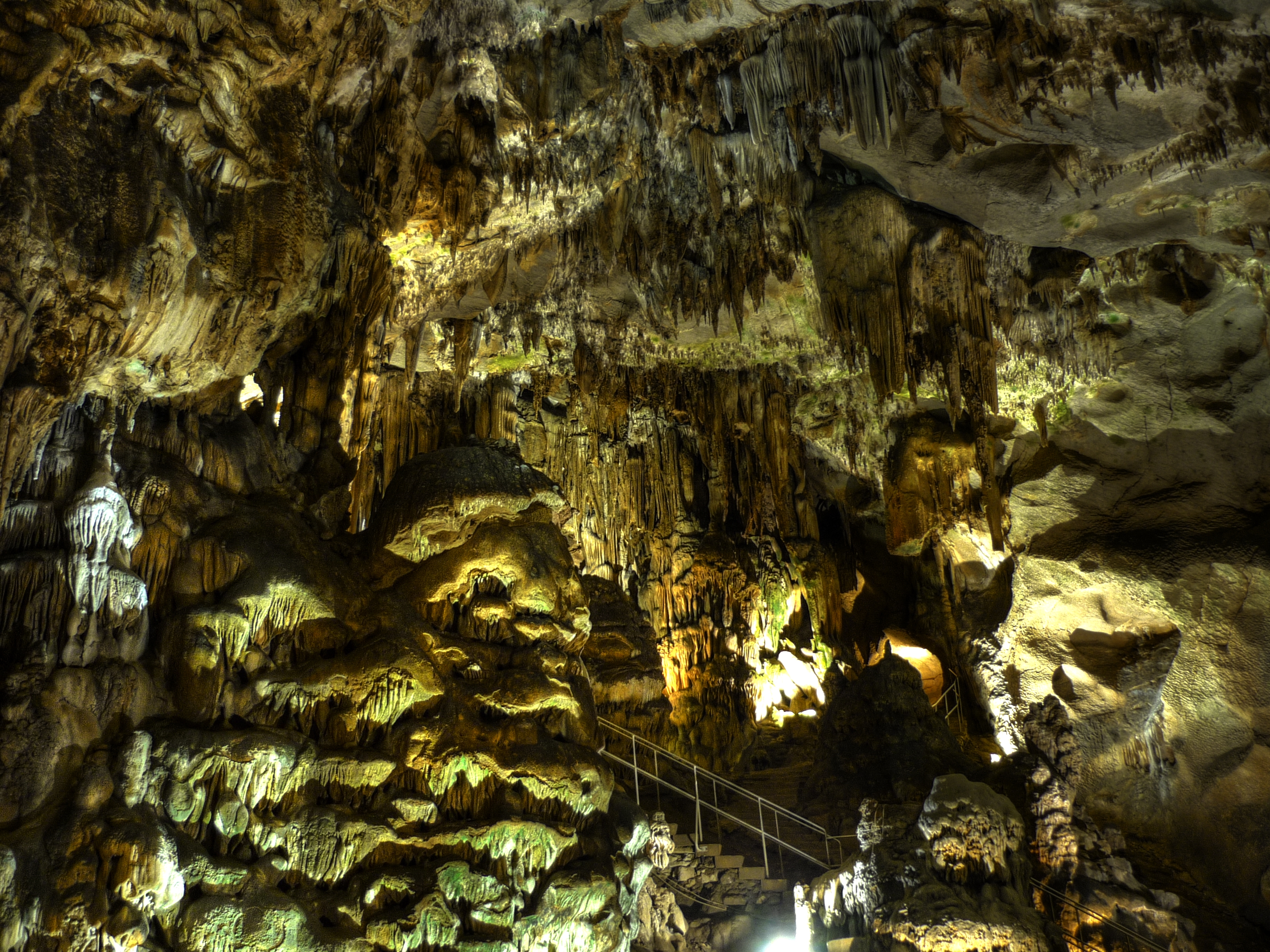Ledenika on:
[Wikipedia]
[Google]
[Amazon]
 Ledenika (, English: icy or glacial) is a
Ledenika (, English: icy or glacial) is a
 Ledenika (, English: icy or glacial) is a
Ledenika (, English: icy or glacial) is a cave
Caves or caverns are natural voids under the Earth's Planetary surface, surface. Caves often form by the weathering of rock and often extend deep underground. Exogene caves are smaller openings that extend a relatively short distance undergrou ...
in the Northwestern parts of the Balkan Mountains
The Balkan mountain range is located in the eastern part of the Balkan peninsula in Southeast Europe, Southeastern Europe. It is conventionally taken to begin at the peak of Vrashka Chuka on the border between Bulgaria and Serbia. It then runs f ...
, 16 km away from the Bulgarian city of Vratsa. Its entrance is approximately 830 m above sea level. The cave features an abundance of galleries and impressive karst
Karst () is a topography formed from the dissolution of soluble carbonate rocks such as limestone and Dolomite (rock), dolomite. It is characterized by features like poljes above and drainage systems with sinkholes and caves underground. Ther ...
formations including stalactite
A stalactite (, ; , ) is a mineral formation that hangs from the ceiling of caves, hot springs, or man-made structures such as bridges and mines. Any material that is soluble and that can be deposited as a colloid, or is in suspension (chemistry ...
s and stalagmite
A stalagmite (, ; ; )
is a type of rock formation that rises from the floor of a cave due to the accumulation of material deposited on the floor from ceiling drippings. Stalagmites are typically composed of calcium carbonate, but may consist ...
s. It was first discovered around the beginning of the 20th century and has been open to tourists since 1961. Ledenika Peak on Graham Land
Graham Land is the portion of the Antarctic Peninsula that lies north of a line joining Cape Jeremy and Cape Agassiz. This description of Graham Land is consistent with the 1964 agreement between the British Antarctic Place-names Committee ...
in Antarctica
Antarctica () is Earth's southernmost and least-populated continent. Situated almost entirely south of the Antarctic Circle and surrounded by the Southern Ocean (also known as the Antarctic Ocean), it contains the geographic South Pole. ...
is named after the cave, in recognition of its cultural importance.
Description
The cave is about 300 m long and contains ten separate halls. Visitors enter through the Antechamber, then pass through several smaller passages into the Concert Hall. Visitors then pass through several more smaller passages, eventually emerging in the White Hall. The largest gallery is known as the Great Temple, with a ceiling of 15 m (50 ft). The Concert Hall is smaller, but has an enormous variation of stalactites and stalagmites. During the winter, icicles may form on the ceiling. The abundance of icicles in winter is thought to have led to the cave's name, which in English translates to icy or glacial.Geology
The limestone formations in the cave have been dated back to thePliocene
The Pliocene ( ; also Pleiocene) is the epoch (geology), epoch in the geologic time scale that extends from 5.33 to 2.58Bulgarian Tourist Union has included Ledenika in their 100 Tourist Sites of Bulgaria, a promotional effort aimed at highlighting the nation's best tourist spots. The cave has been one of the country's most noted caves since it was opened to tourists. In the late 1980s, there were a record 100,000 visitors annually.
Ledenika cave 002.jpg
Ledenika cave 008.jpg
Ledenika cave 013.jpg
Ledenika cave 014.jpg
Ledenika cave 010.jpg
Ledenika cave 049.jpg
Ledenika cave 045.jpg
Ledenika cave 038.jpg
Ledenika cave 035.jpg
Ledenika cave 034.jpg
Ledenika cave 028.jpg
Ledenika cave 024.jpg
Caves in Bulgaria
{{Caves in Bulgaria Tourist attractions in Vratsa Province Landforms of Vratsa Province Show caves in Bulgaria Balkan mountains Limestone caves Vratsa
Gallery
See also
* List of caves in BulgariaReferences
External links
*Caves in Bulgaria
{{Caves in Bulgaria Tourist attractions in Vratsa Province Landforms of Vratsa Province Show caves in Bulgaria Balkan mountains Limestone caves Vratsa